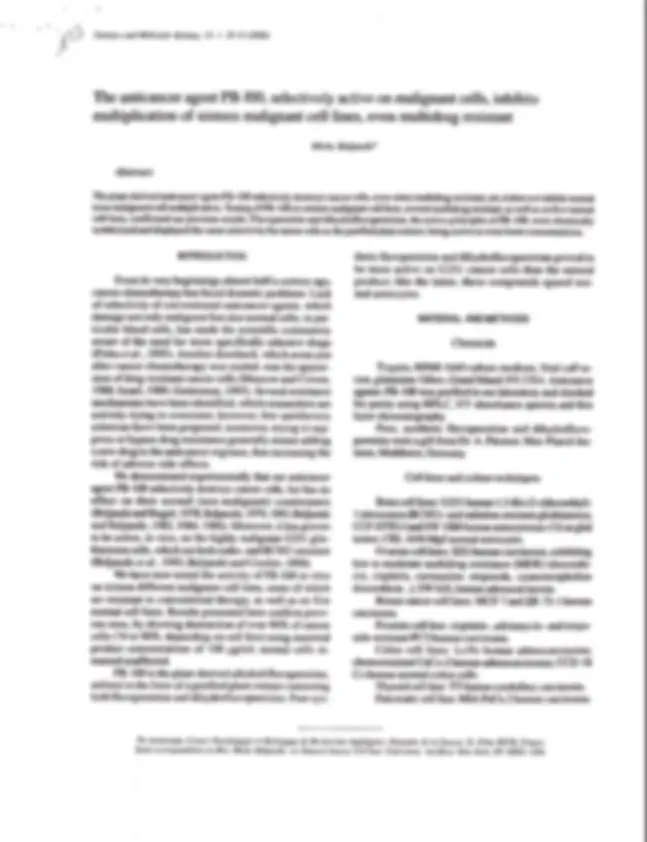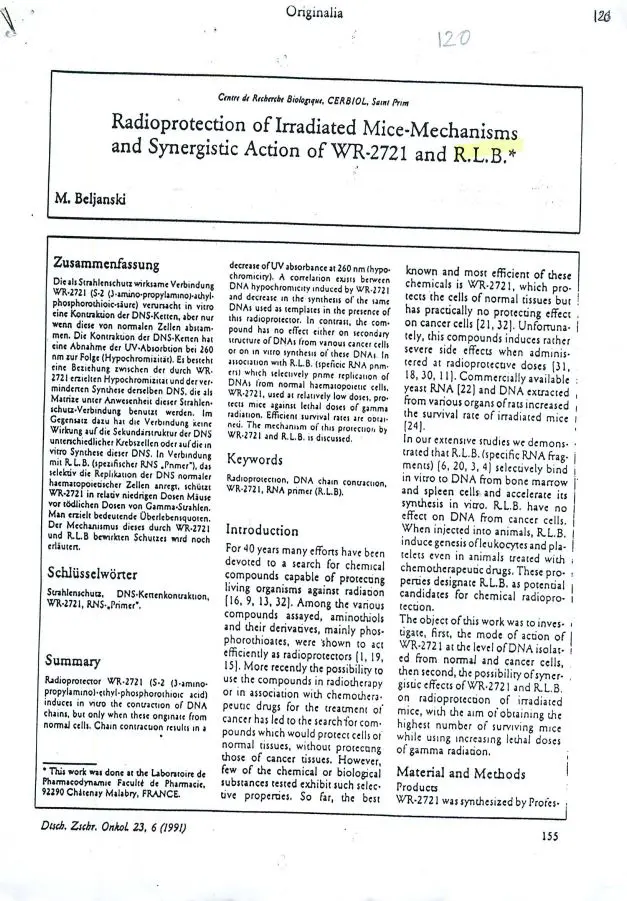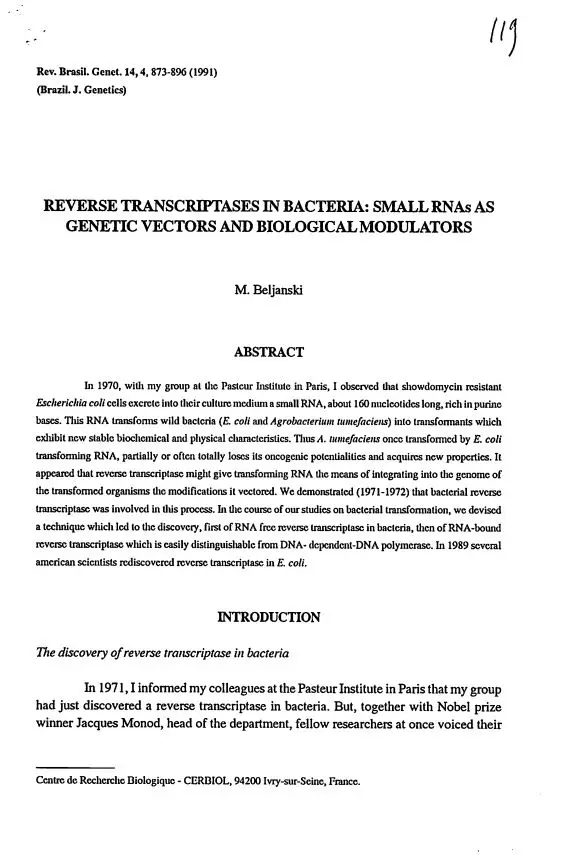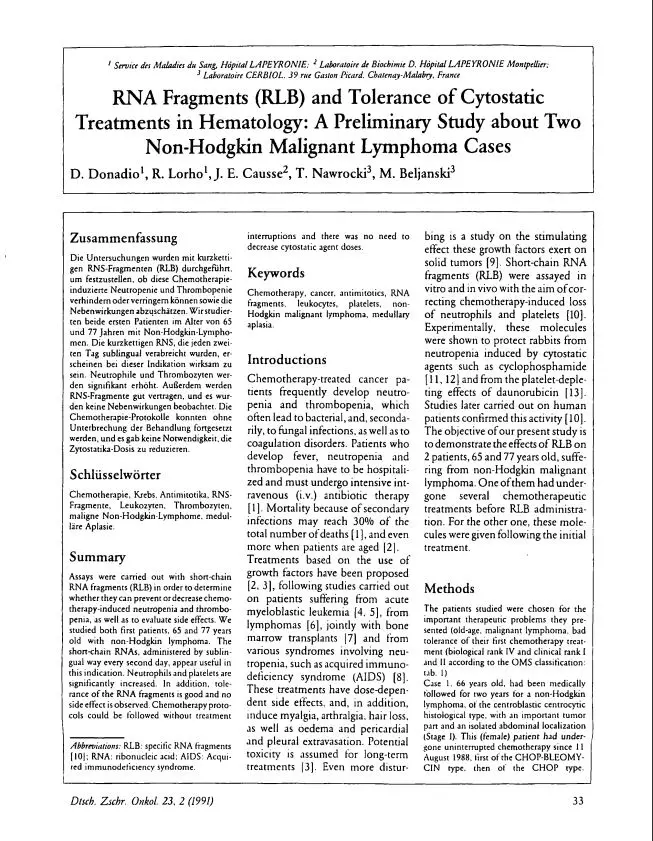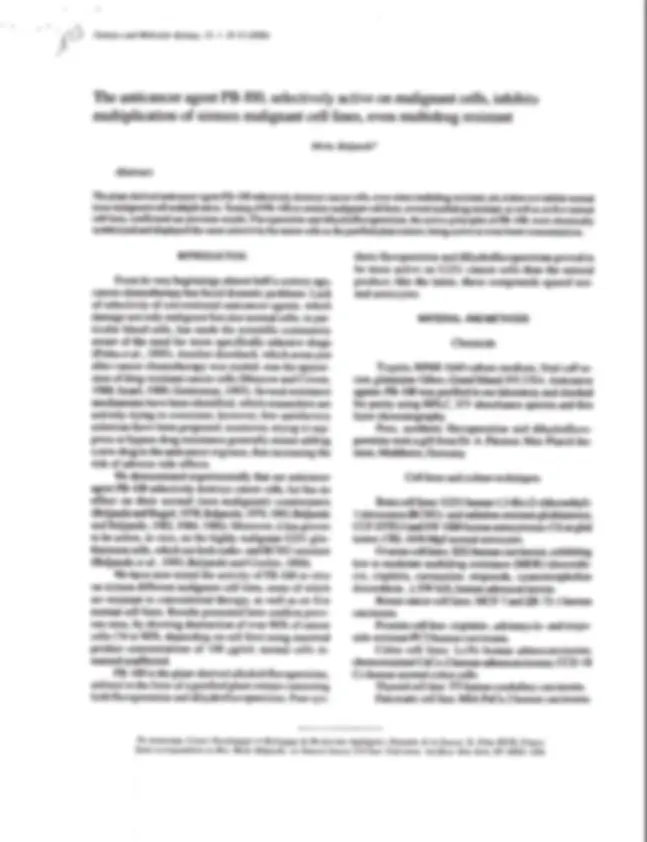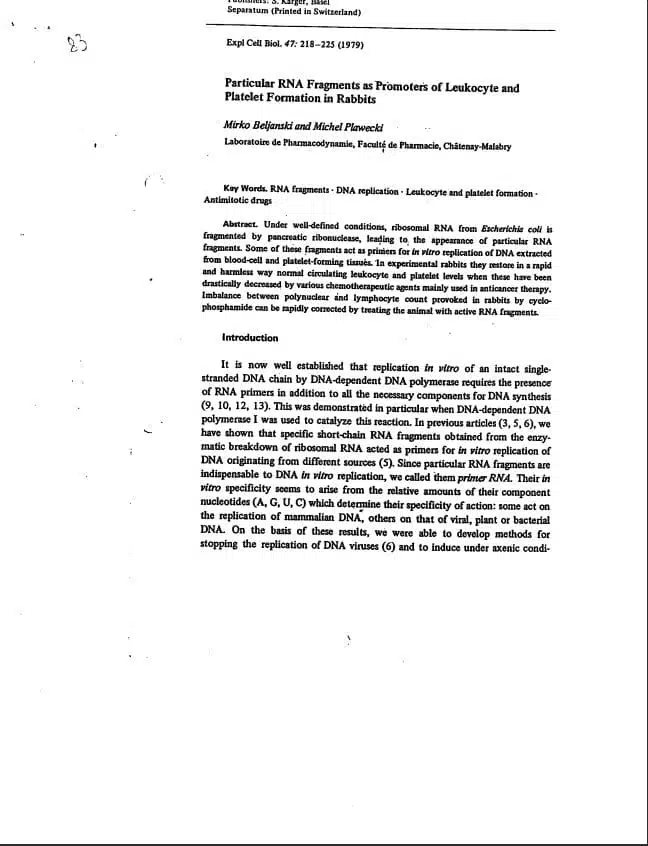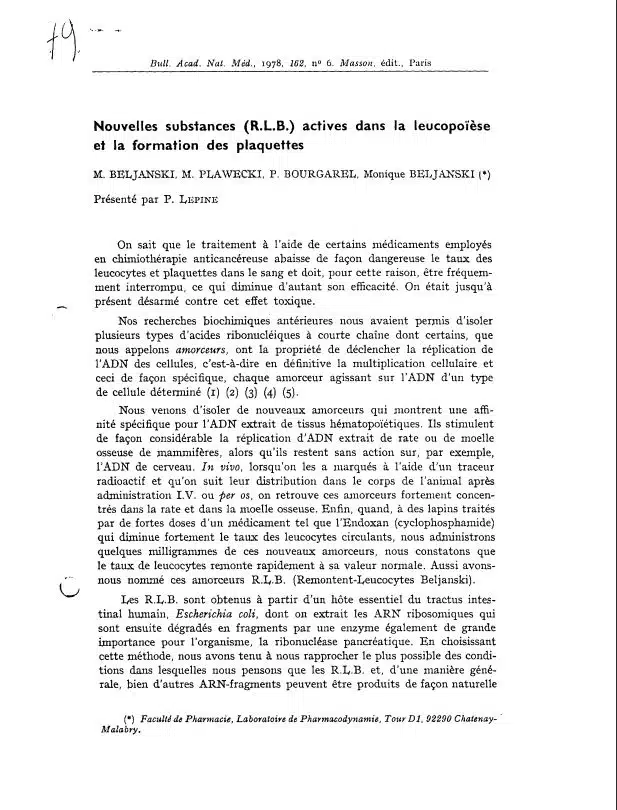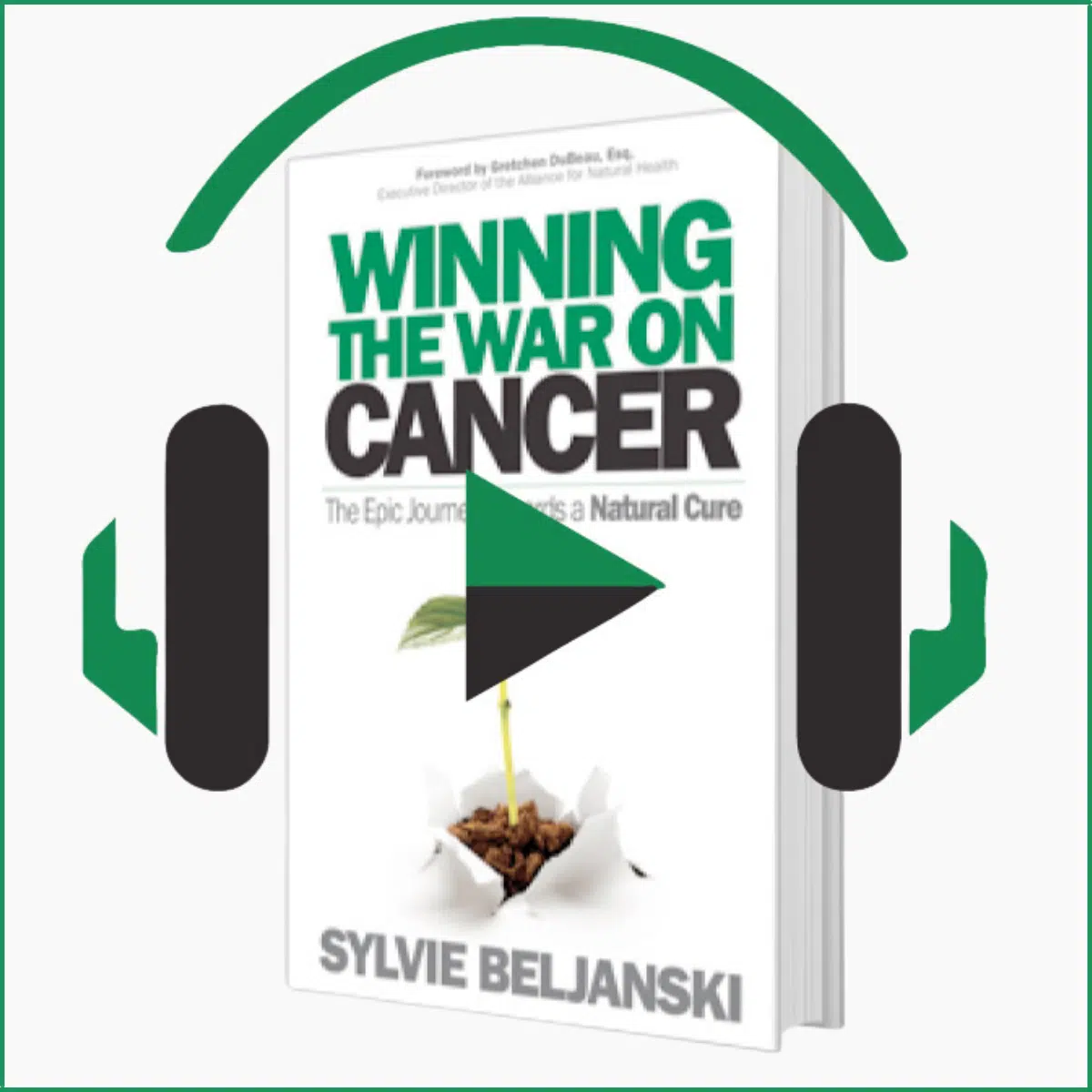Below you will find Dr. Mirko Beljanski’s 133 Research Publications
Deutsche Zeitschrift für Onkologie, 24, 2, 1992, pp. 41-46.
ABSTRACT: Radioprotector WR-2721 (S-2 (3-amino-propylamino)-ethyl-phosphorothioic acid) includes in vitro the contraction of DNA chains, but only when these originate from normal cells. Chain contraction results in a decrease of UV absorbance at 260 nm (hypochromicity). A correlation exists between DNA hypercromicity induced by WR-2721 and decrease in the synthesis of the same DNAs used as templates in the presence of this radioprotector. In contrast, the compound has no effect either on secondary structure of DNAs from various cancer cells or on in vitro synthesis of these DNAs. In association with R.L.B. which selectively prime replication of DNAs from normal haematopoietic cells, WR-2721, used at ralatively low doses, protects mice against lethal doses of gamma radiation. Efficient survival rates are obtained. The mechanism of this protection by WR-2721 and R.L.B. is discussed.
ABSTRACT: In 1970, with my group at the Pasteur Institute in Paris, I observed that showdomycin resistant Escherichia coli cells excrete into their culture medium a small RNA, about 160 nucleotides long, rich in purine bases. This RNA transforms wild bacteria (E. coli and Agrobacterium tumefaciens) into transformants which exhibit new stable biochemical and physical characteristics. Thus A tumefaciens once transformed by E. coli transforming RNA, partially or often totally loses its oncogenic potentialities and acquires new properties. It appeared that reverse transcriptase might give transforming RNA the means of integrating into the genome of the transformed organisms the modifications it vectored. We demonstrated (1971-1972) that bacterial reverse transcriptase was involved in this process. In the course of our studies on bacterial transformation, we devised a technique which led to the discovery, first of RNA free reverse transcriptase in bacteria, then of RNA-bound reverse transcriptase which is easily distinguishable from DNA-dependent-DNA-polymerase. In 1989 several american scientists rediscovered reverse transcriptase in E. coli.
ABSTRACT: Assays were carried out with short-chain RNA fragments in order to determine whether they can prevent or decrease chemotherapy-induced neutropenia and thrombopenia, as well as to evaluate side effects. We studied both first patients, 65 and 77 years old with non-Hodgkin lymphoma. The short-chain RNAs, administred bysublingual way every second day, appear useful in this indication. Neutrophils and platelets are significantly increased. In addition, tolerance of the RNA fragment is good and no side effect is observed. Chemotherapy protocols could be followed without treatment.
In the Role of RNA in Development and Reproduction.
NCI-EORTC Symposium on nature, prevention and treatment of clinical toxicity of anticancer agents.
Institut Bordet, Bruxelles, 1980
ABSTRACT: Under well-defined conditions, ribosomal RNA from Escherichia coli is fragmented by pancreatic ribonuclease, leading to the appearance of particular RNA fragments. Some of these fragments act as primers for in vitro replication of DNA extracted from blood-cell and platelet-forming tissues. In experimental rabbits they restore in a rapid and harmless way normal circulating leukocyte and platelet levels when these have been drastically decreased by various chemotherapeutic agents mainly used in anticancer therapy. Imbalance between polynuclear and lymphocyte count provoked in rabbits by cyclophosphamide can be rapidly corrected by treating the animal with active RNA fragments.
ABSTRACT IN FRENCH : Lorsque les taux de leucocytes et de plaquettes dans le sang ont été abaissées par l’effet secondaire de certaines chimiothérapies, ces taux peuvent être ramenés rapidement et sans danger à leurs valeurs normales par les ARN-fragments, les R.L.B.
ABSTRACT IN ENGLISH : When the leucocytes and blood platelets have their counts reduced in the blood following chemotherapy, they can be rapidly and safely, restored to normal values by injecting cellular ARN fragments, which the authors call R.L.B. factors.


